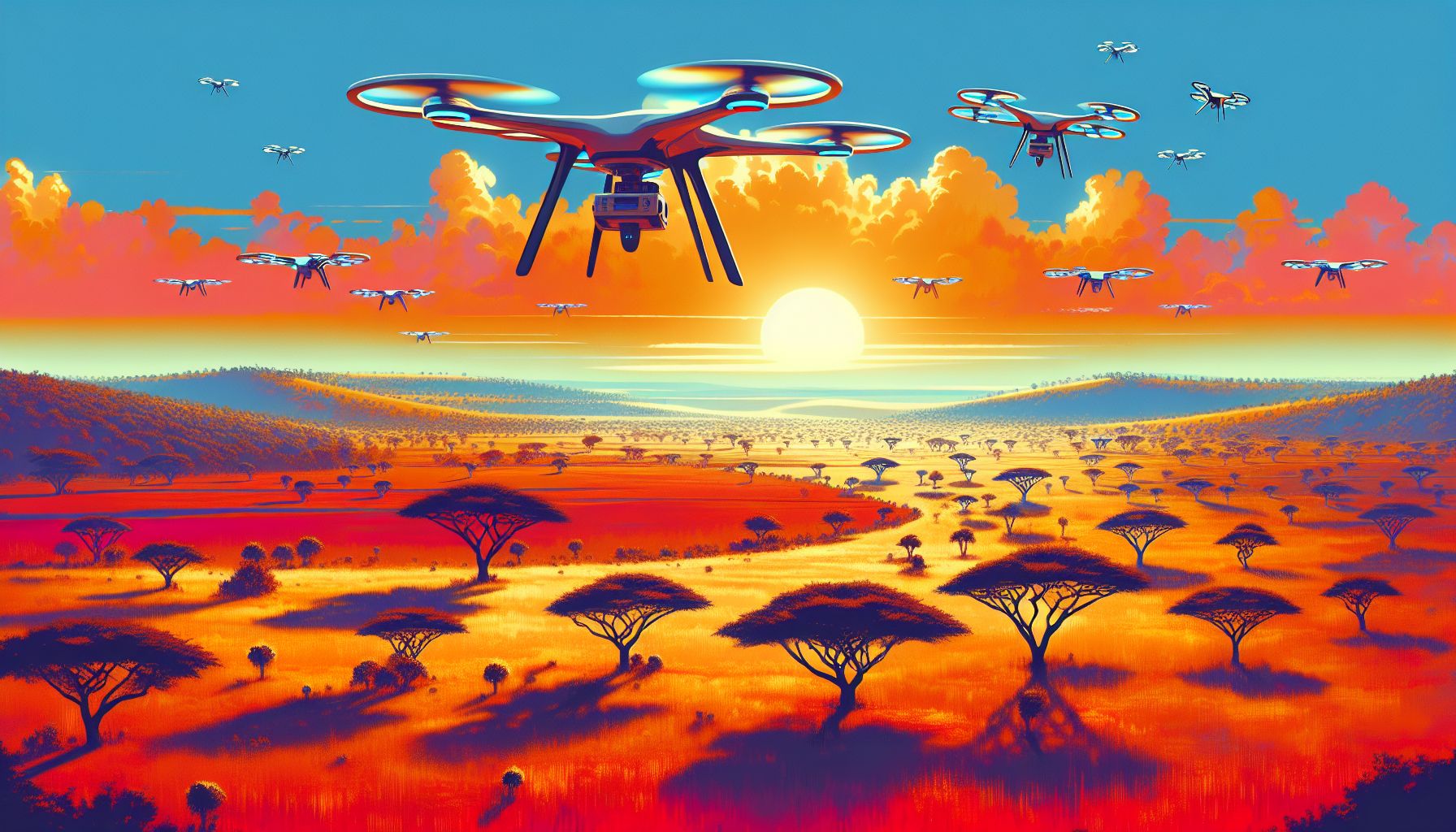AI-Powered Drones: The New Frontier in African Wildlife Conservation

Africa, Tuesday, 30 July 2024.
Innovative drone technology equipped with AI is revolutionizing anti-poaching efforts in Africa. These high-tech sentinels can detect and deter poachers in real-time, offering a powerful new tool for protecting endangered species. The adaptable technology shows promise for various wildlife protection applications, marking a significant advance in conservation strategies.
Enhanced Capabilities
The integration of artificial intelligence with drone technology has significantly amplified the drones’ capabilities. These AI-powered drones can autonomously navigate through dense forests and vast savannas, utilizing advanced image recognition to identify poachers and endangered wildlife. By leveraging these capabilities, drones can provide real-time data to rangers, allowing them to respond swiftly to poaching activities and effectively protect vulnerable species.
How It Works
At the core of this innovation is the AI-driven software that processes data from multiple sensors on the drones. These sensors include high-resolution cameras, thermal imaging, and motion detectors. The AI algorithms analyze the data to detect unusual activities, such as the presence of poachers or distressed animals. Once detected, the drones can either alert nearby rangers or take direct action to deter poachers, such as emitting loud noises or deploying non-lethal deterrents.
Key Players and Locations
Quantum Systems, a German-based company, is at the forefront of this technological advancement. They have enhanced their Vector reconnaissance drones with AI upgrades, improving their autonomous navigation and image recognition capabilities. These drones are currently being tested in various regions, including Africa, where they aim to combat poaching and support wildlife conservation efforts. Quantum Systems has also collaborated with Wilderness International to monitor over 5 million square meters of jungle in Peru for threats like poaching and deforestation[1].
Collaboration and Impact
The success of these AI-powered drones relies on collaboration among technology developers, conservationists, and local communities. By working together, these groups can share knowledge and resources to enhance conservation strategies. The drones have already shown promising results in reducing poaching incidents and improving the survival rates of endangered species. As this technology continues to evolve, it holds the potential to be adapted for various applications, from monitoring marine life to protecting forests from illegal logging.
Future Prospects
The ongoing development of more sophisticated drone systems aims to increase efficiency in environmental monitoring and wildlife protection. The potential for these drones to be adapted for various wildlife protection applications is vast. As AI technology advances, it will enable drones to perform even more complex tasks, such as predicting poaching patterns and deploying preemptive measures. This innovation represents a significant leap forward in conservation strategies, offering a powerful tool to safeguard the planet’s most vulnerable species.

